Val d’Orcia villages and towns to visit
Today I’ll suggest an itinerary for a journey through the towns and villages of Val d’Orcia. The area’s undulating hills and contrasting colors, bordered by cypresses and dotted with quaint farmhouses, has given it standing in the collective imagination as the archetype of the Tuscan landscape. This privileged status is entirely deserved – the valley on the Tuscany-Umbria border is phenomenally beautiful, and the thousands of tourists who visit from all over the world thankfully do not detract from the peace and authenticity of the region.
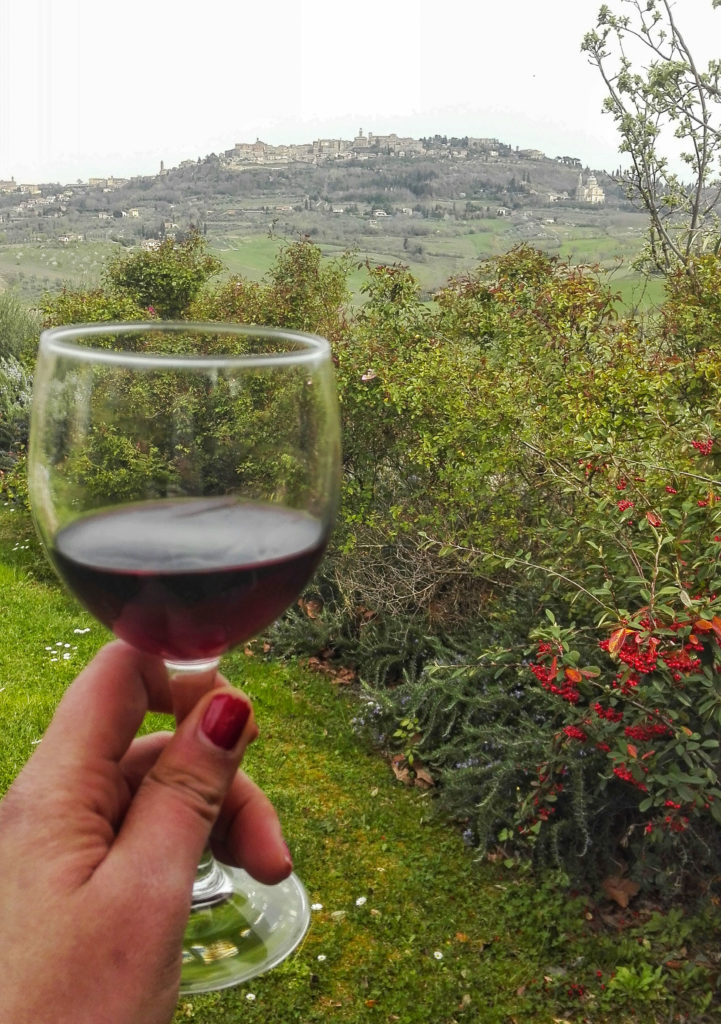
Towns and Villages to visit in Val d’Orcia
Val d’Orcia is a small universe of its own, best discovered on a slow, calm pace, sipping at its little pleasures as you go in the way one should savor a glass of good red wine. You should really give it three days at least, allowing for the tenancy of time to pleasantly dissolve in the valley.
You can stay in one of the many beautiful country villas or agriturismo in the area, and spending the days exploring different villages and places by car. My favorite one is Villa Svetoni Wine Resort, a wonderful country villa in Montepulciano, with a pool and a spa. The highlight is the ancient cellar, where you can taste their own, awarded, wine.
Here Are the towns and villages of Val d’Orcia that I think you really shouldn’t miss:
Bagno Vignoni, for the 16th-century thermal pool
In my opinion Bagno Vignoni is the most beautiful village in Val d’Orcia. It is certainly the most unique. What makes Bagno Vignoni so special is its the large 16th-century thermal spa, in the heart of the town, surrounded by ancient stone buildings.
Natural, hot water is channeled into the village, then flows from the Piazza delle Sorgenti down the hillside, forming pools and cataracts, before passing through the Parco Naturale de Mulini (Natural Park of the Mills). The park is named after its four medieval mills that lie at short walk from the village.
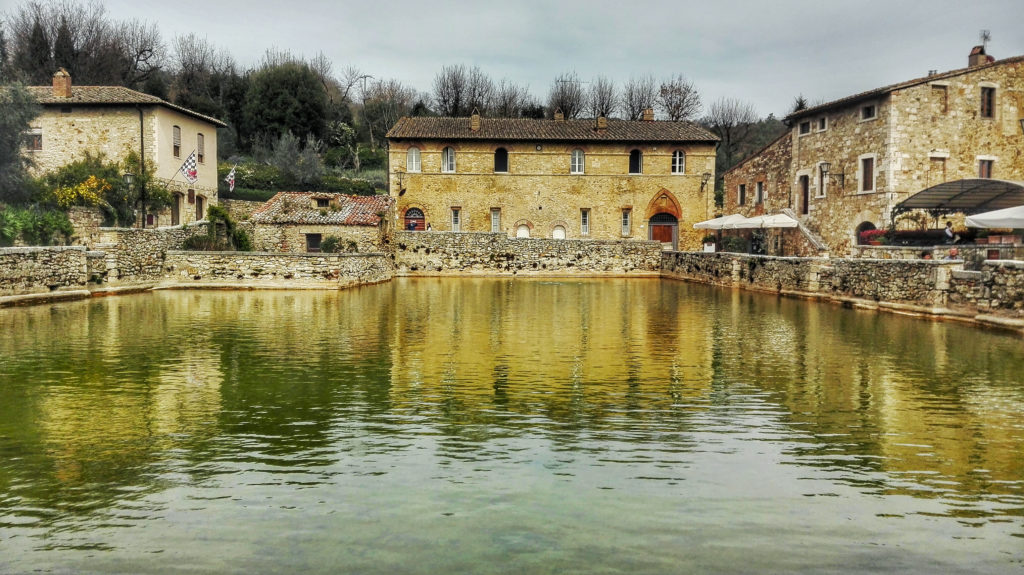
Montalcino, for the Brunello wine
Though it is certainly a charming village, and it’s medieval fortress is indeed very impressive, Montalcino is above all a town of its wine, of which Brunello di Montalcino is the best-known but by no means only top-class example. Relax at a table of a café in the main piazza, with centuries-worth of tradition in your glass.
If you like gothic architecture do not miss the wonderful Abbey of Sant ‘Antimo. You can find it a few miles away from Montalcino, in the hamlet of Castelnuovo Abate.
Montepulciano, for tuscan food
This small hamlet is a gem of renaissance architecture centered harmoniously around the Piazza Grande and dominated by the Michelozzo-designed palace. The commune also had superb cuisine. In particular, I would suggest Cantina de ‘Ricci, a wine-lovers paradise, a cellar housed in the romantic majesty of a former romanesque cathedral. It is unsurprising that many people consider this the most beautiful winery in the world.
I would also recommend dining at Osteria Acquacheta, which serves up some of the world’s best steaks, as well as other fantastic Tuscan dishes and its own home-made wine.
- To know more about steaks in Tuscany read my post about Florentine Steak in Florence!
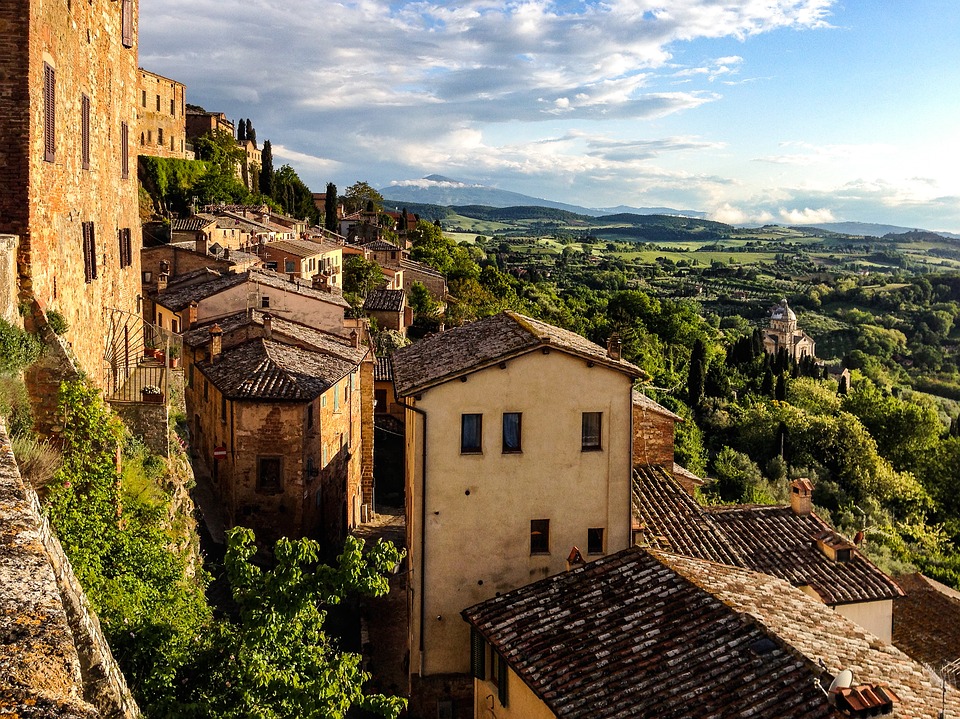
Pienza, for the dream of Reinaissance
What is now Pienza was once Corsignano, a tiny settlement of no repute. But its fate took a remarkable turn when one of its denizens became Pope Pius II. Pius II initiated the village’s transformation according to Renaissance ideals of urban perfection. The resulting village is small in size but great in charm, displaying all the elegance and harmony of proportions of the Tuscan Renaissance.
Recognition of its beauty resulted in its being awarded status as a UNESCO World Heritage Site. This turned Pienza into one of the most visited villages in Tuscany, and can be really crowded in summer and spring weekends. But it totally worth the trip.
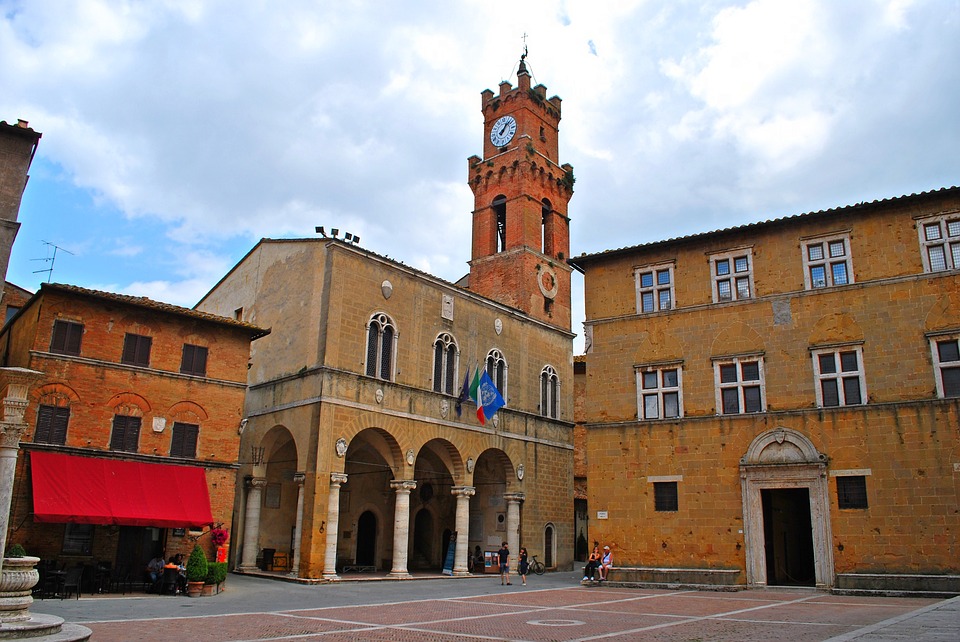
San Quirico d’Orcia, for its extra virgin olive oil
Another small hamlet boasting a rich history, San Quirico d’Orcia has remained largely unchanged over the centuries, even as its commercial importance has diminished since its days at the crossroads of several trade-routes which brought people, goods, and ideas.
The village produces some of the world’s best extra-virgin olive oil, which it celebrates at its annual Oil Festival. Here you can know more about Tuscan extra virgin olive oil.
Ristorante Trattoria Osenna serves some of Tuscany’s best traditional regional food, notably its home-made pasta. Don’t miss out on visiting the Chigi Zandodari palace and the Horti Leonini renaissance gardens.
Stop between Pienza and San Quirico d’Orcia to see the Vitaleta chapel. You may be unfamiliar with the name, but you will almost certainly have seen it in photos; this church atop a hill is truly iconic of Tuscany.
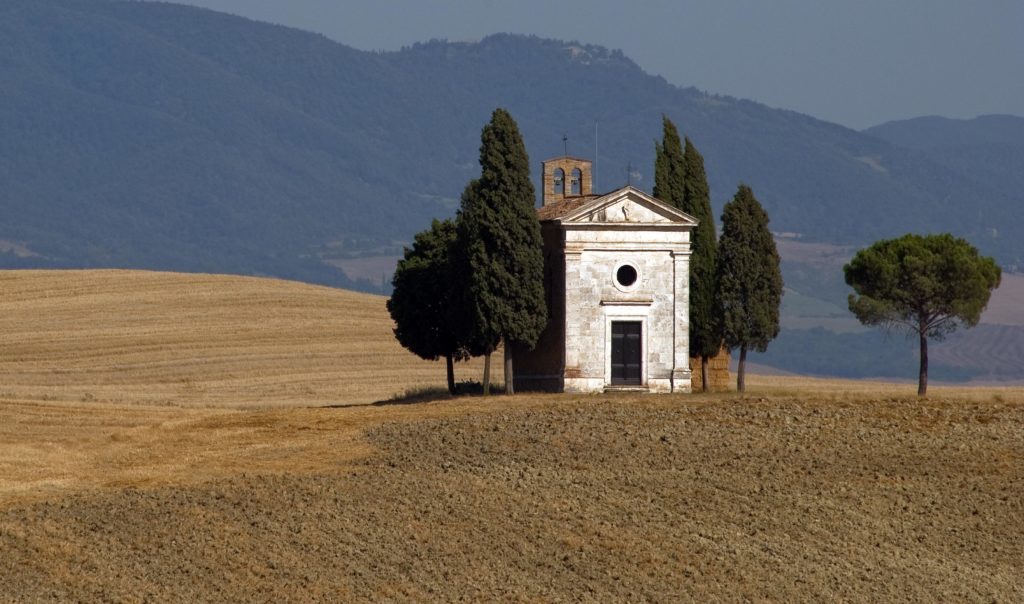
Monticchiello, for the Middle Ages
While Pienza represents the triumph of Renaissance rationality, Monticchiello is a perfect example of Medieval spontaneity. This makes it one of the most pleasant settlements to explore on foot, with each curve of its jumbled alleyways promising surprise. Walking among ancient stone walls, cobblestones roads, with no cars or scooters around.. It really feels really like taking a leap in time.
Have you ever been to this part of Tuscany? Which of the villages of Val d’Orcia is your favorite? Tell me about your experiences in a comment!
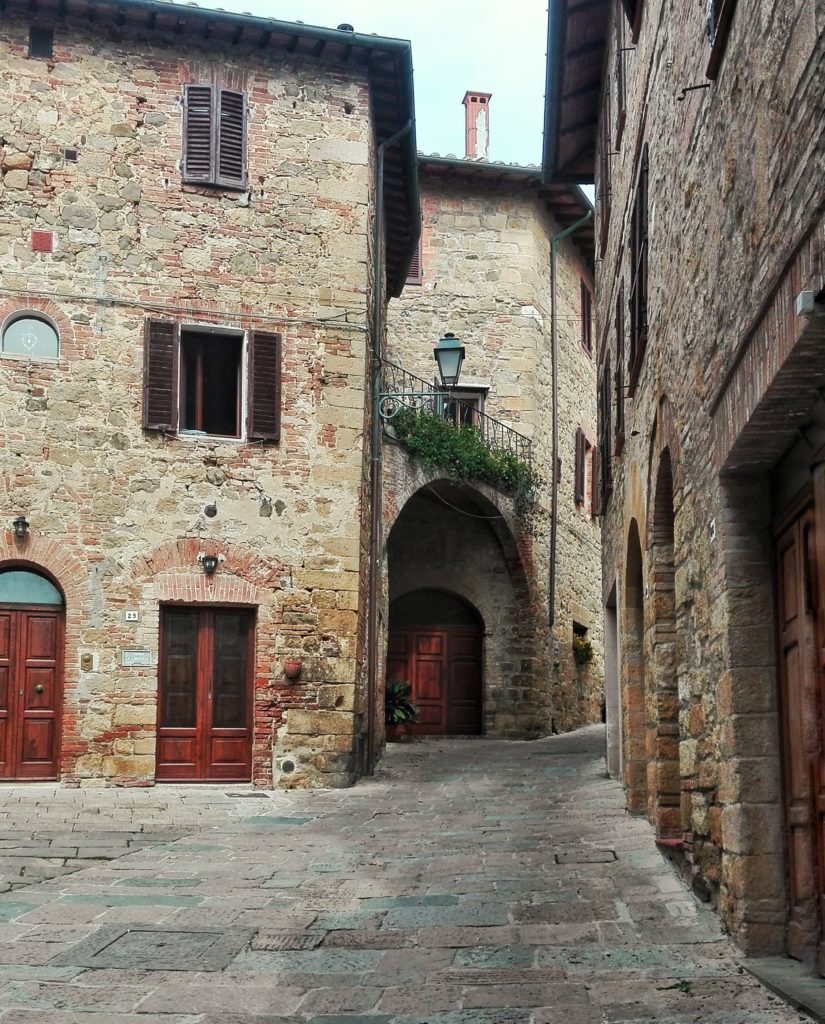
How to get to Val d’Orcia from Florence
Val d’Orcia is quite isolated from Florence, and there’s no railway reaching the valley. The closest train stations are Siena, Buonconvento and Chiusi-Chianciano Terme. But once there, you’ll have to take a bus to one of the Val d’Orcia towns, and buses are very few and unreliable. I don’t recommend that.
The best way to get to Val d’Orcia is renting a car in Florence and driving there.
Alternatively, you can take a day trip tour from Florence, including transportation, lunch and a tour guide. This is a great option to visit different places in a shorter time. Some options:
You can find more ideas for a day trip from Florence in my blogpost.
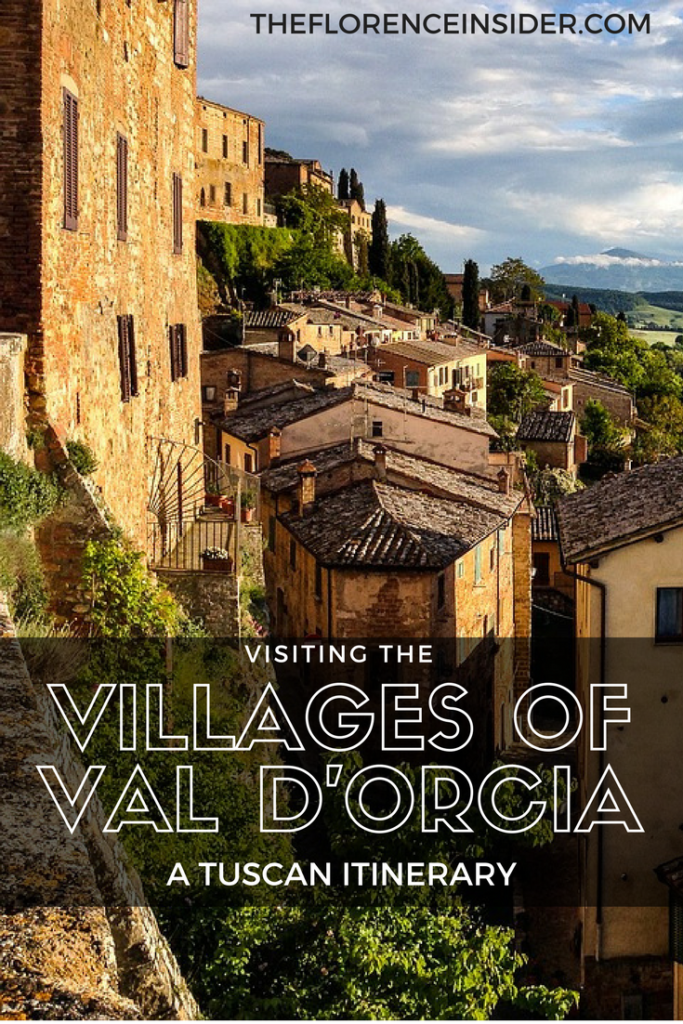
Certamente Pienza è il mio paese preferito di tutti questi! Io la chiamo “la capitale del mio cuore”
Pienza is lovely!